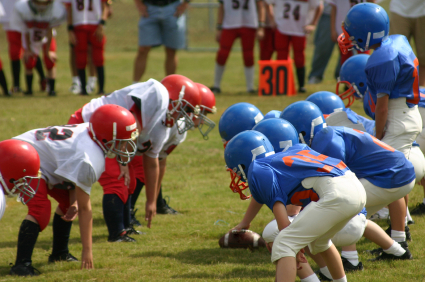 With spring sports beginning for over 40 million young athletes, the National Athletic Trainers' Association (NATA) has ten tips for parents, coaches, and administrators to help prevent injuries and ensure a safe and successful season.
With spring sports beginning for over 40 million young athletes, the National Athletic Trainers' Association (NATA) has ten tips for parents, coaches, and administrators to help prevent injuries and ensure a safe and successful season.
- Get pre-participation physical evaluations/exams (PPEs): All children should receive both a general medical exam and an orthopedic screening every year which will determine their readiness to play and uncover any condition that may limit participation. Both electronic and paper versions of PPEs are available.
- Make sure children are physically and mentally "in shape": Parents, with assistance from coaches, should determine whether their children are physically and psychologically conditioned for the sport/activity level they're playing. Do not push children into something they do not want to do. All coaches and medical staff should also be provided with a child's medical history, and told about any medical conditions such as asthma.
- Check all equipment and playing field surfaces: Coaches and athletic trainers should check all equipment to ensure they are up to manufacturer standards of quality and care. Walk the field before each practice or game to check for divots, uneven surfaces, loose goal posts or other conditions that could affect play.
- Keep surfaces, locker rooms and equipment clean: Keeping all surfaces cleaned before and after use can prevent the spread of skin diseases including MRSA, ringworm or herpes, in sports. All players should wash their hands and shower after practices and games. Mats, equipment, locker rooms and shower floors should be kept clean at all times. Wash or disinfect workout gear and clothes after each practice or game. If an athlete notices an unfamiliar skin surface, report it to the athletic trainer immediately for evaluation. This could literally save a life.
- Play smart and with your head: Athletes and parents should be well-educated on the risks and symptoms of concussion. If you suspect a concussion seek medical assistance immediately. And, when in doubt, sit them out.
- Heat is a health consideration: Athletes should be properly acclimatized to heat and warm weather conditions at the start of a season. Educate players on signs of exertional heat illnesses. Any athlete experiencing symptoms should be encouraged to report them to the coach and athletic trainer immediately.
- Find out who's taking care of the team: In the case of injury, make sure there is proper on-field care. Many schools and sports teams rely on athletic trainers or parents with medical and first aid training and sports safety certification to keep kids safe. Yet less than half of high schools have access to athletic trainers.
- Play with heart but protect it: Sudden cardiac arrest is a life threatening health issue in school sports. All schools should be encouraged to have access to an on-site defibrillator (AED).
- Eat and drink to win: This includes a balanced and healthy diet. Without proper nutrition and hydration, young athletes will feel sluggish, which can increase their chance of injury. Improper hydration also increases the risk of heat illness. Be sure athletes start practice fully hydrated with water or a sports drink.
- Establish an emergency medical plan: Every team should have a written emergency medical plan, reviewed by the athletic trainer or local Emergency Medical Service. Individual assignments and emergency equipment and supplies need to be included in the emergency action plan. If an athletic trainer is not employed by the school or sport league, qualified individuals need to be present to render care. Knowing that a school has prepared for emergency will give parents peace of mind.
Teaming up for safety
"It's so important to have a team approach when it comes to youth sports safety," says Robinson. "That includes the parents, athletes, coaches, athletic trainers and other medical staff working together to ensure safe and successful seasons in the school year ahead."
"It is so important that young athletes are physically and mentally prepared for the start of the sports season, said Brian Robinson, ATC, chair of NATA's secondary school committee. "Educating parents and school personnel about ways to help children avoid common sports-related injuries is a top priority. And, nothing is more frustrating to the athlete, his or her team and family, than for an avoidable injury to occur and sideline him or her from play."
Participation and injury statistics
According to a National Council of Youth Sports 2008 survey, over 40 million young athletes ages 6-18 participate in organized youth sport activities.
With high school participation at an all-time high - nearly 7 million high school students play sports - injuries are also on the rise, with an estimated 715,000 high school sports-related injuries occuring each year. 8,000 children are treated in emergency roomseach day for sports-related injuries.1
Source: National Athletic Trainers' Association (NATA)
1. Wier, L. (Thomson Reuters), Miller, A. (Student), and Steiner, C. (AHRQ). Sports Injuries in Children Requiring Hospital Emergency Care, 2006. HCUP Statistical Brief #75. June 2009.
Most recently updated April 18, 2012








